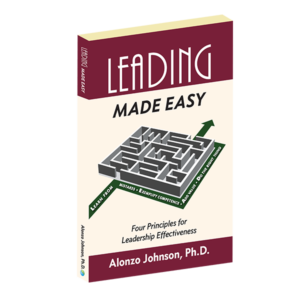Demonstrating Moral Courage

Does the right thing even when it is not popular
The choice to do right or wrong is woven into the fabric of our everyday lives—we are constantly presented with opportunities to choose to do right, or wrong. It is admirable when someone
chooses to do right. But, making the right choice and then floundering or demonstrating lack of conviction regarding that choice does not help the situation. When we choose to do right, we only show good moral reasoning, but when we act upon the choice to do right, and put ourselves at risk, in some way, we demonstrate moral courage.
To better understand what moral courage is, let’s explore what is required in order for it to emerge. According to Rielle Miller, there are five requirements that must be present in order for moral courage to occur:
First, you must recognize that there is a moral issue to be resolved.
Second, you must choose how to deal with the moral issue. Your choice will usually be driven by personal values. Our personal values serve as the compass to our ethical beliefs and help us decide how to deal with moral issues.
Third, you must act upon the moral decision that you made earlier.
Fourth, you must take action(s) that put you at risk in some way and accept the consequences of your actions.
Fifth, you must face your fears and overcome them.
Leaders are frequently presented with ethical dilemmas; those who take action and do the right thing often do so because of their moral courage. Malala Yousafzai, a Pakistani activist for women’s education—and the youngest Nobel Prize recipient—is a great example of a leader who has demonstrated moral courage. After the Taliban took over her homeland in the Swat Valley region of Pakistan, they forbade girls from getting an education, banned them from attending school, and ordered all schools for girls closed.
Blogging under a pseudonym, and giving interviews for print and television media, Malala spoke out against the Taliban without regard to her personal safety. During her Nobel Prize acceptance speech, she recounted, “I had two options, one was to remain silent, and wait to be killed. And the second was to speak up, and then be killed. I chose the second one.”
In Malala’s case, all of the components of moral courage were present. She was confronted with the moral issue of the Taliban’s mistreatment of women. She chose to deal with the issue and acted upon her choice by writing a blog and giving interviews to the media. She put herself at risk by
taking action and overcame her fear of the Taliban’s reprisal.
As a result of Malala speaking out against the injustices of the Taliban, an assassin shot her in the head in an attempt to silence her. The failed assassination attempt resulted in more scrutiny and resistance against the Taliban. It also sparked international support for Malala and her cause. She
continues to speak out for women and children’s rights throughout the world, and she has garnered global support for doing so.
Acts of moral courage are not only demonstrated in extreme situations, as in Malala’s case. Each of us is presented with opportunities to exhibit it in our daily lives.
For example: a friend of mine, Susan, once worked in an office where some of the employees would place incoming paperwork for processing into their hold boxes and delay working on it until the weekend. Their goal was to create overflow work so that they could justify working during weekends to earn overtime pay. This practice seemed to increase when a major holiday was approaching, especially during the Christmas holiday season.
As the newest member assigned to the team, this struck Susan as unethical. She asked the employees participating in this practice to stop, but her request fell on deaf ears. Since she could not singlehandedly solve the problem at the source, her next action was to inform her boss, Todd. Todd
was already aware of this overtime scheme and was allowing it to happen. So he did nothing to stop it.
Faced with the choice of “rocking the boat” or doing nothing to stop this overtime scheme, Susan decided on the former. She went straight to Todd’s boss, David, and informed him about the matter. After learning of this scheme, David called Todd to his office to ask why so much overtime was
required for such a small amount of work. When Todd could not answer the question to David’s satisfaction, he was reprimanded for abusing overtime and informed that all future overtime work would require his approval.
Needless to say, Susan was not a popular person among those who had been abusing the overtime. She became known as “Miss Straight-Laced” within the team.
Earlier, I explored the importance of giving feedback as an extension of encouraging others. Some feedback requires moral courage from the leader. Some leaders cower at giving honest feedback to team members about their work performance. However, effective leaders are not afraid to give
honest feedback; they say what they mean and mean what they say.
Another attribute of effective leaders is that they do not postpone making tough or unpleasant decisions. They have the moral courage to jump right in and deal quickly and effectively with problems. Since true leadership is doing what is right despite the political climate or consequences, moral courage is required for leadership effectiveness.
In summary, a leader who demonstrates moral courage . . .
- Does what is right despite the political climate or consequences
- Gives honest feedback to team members about their work performance
- Deals quickly and effectively with problems
- Does not postpone making tough or unpleasant decisions
- Says what he or she means and means what he or she says
The above article is an excerpt from Alonzo’s new book:
Leading Made Easy. To learn more about his book and download a free leadership assessment, visit www.AlonzoJohnsonPHD.com







 As I discussed in my book,
As I discussed in my book, 

 Remaining open to new ideas will position you to grow and succeed as well!
Remaining open to new ideas will position you to grow and succeed as well!
 Yikes! You guessed it—the candidate was a woman, and the hiring manager had just violated both EEOC pre-hire guidelines and our own company policy by saying that. I spent the remaining time at dinner apologizing to the candidate and un-doing the damaging comment made by the hiring manager. I assured her that it was not the company’s policy or my expectation, as the lead staffing person, to require her to consult with anyone about the job offer we had extended to her.
Yikes! You guessed it—the candidate was a woman, and the hiring manager had just violated both EEOC pre-hire guidelines and our own company policy by saying that. I spent the remaining time at dinner apologizing to the candidate and un-doing the damaging comment made by the hiring manager. I assured her that it was not the company’s policy or my expectation, as the lead staffing person, to require her to consult with anyone about the job offer we had extended to her. 